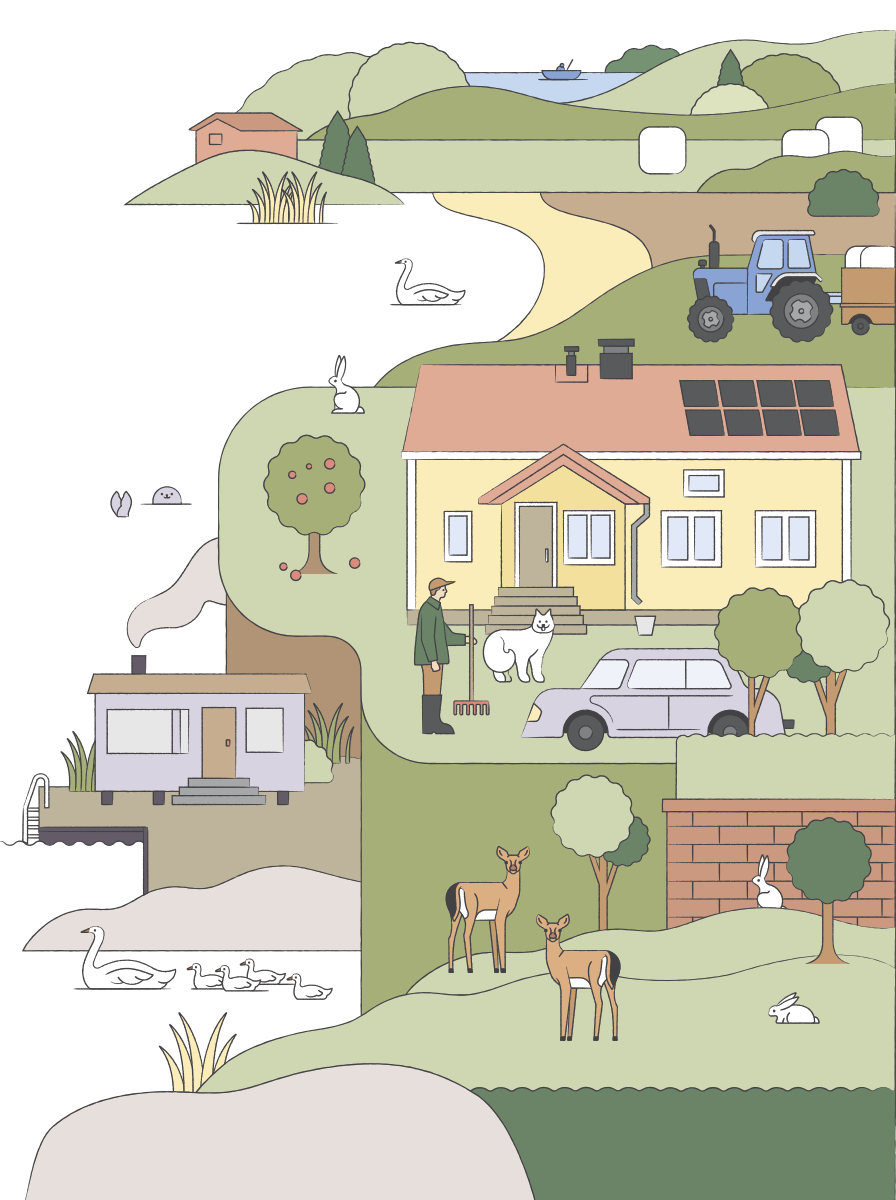The more insulated the house is and the tighter its frame, the less energy escapes through its walls, floor and roof. A house can be tight and still breathe.
In detached and semi-detached houses that have plenty of ceiling area respective their volume, 8–18% of the heat escapes through the flat roof. This is why insulating the flat roof is often the best way to improve the building frame’s energy efficiency. In some cases, the thermal energy consumption of a detached house has reduced by half after adding insulation. In apartment houses, 4–6% of thermal energy escapes through the flat roof, and adding insulation is usually worth it only in connection with flat roof renovation for any other reason. If the house has a vacant attic where new insulation can be blown on top of old insulation, adding insulation is usually economical.
In some cases, the thermal energy consumption of a detached house has reduced by half after adding insulation.
The benefit of very thick insulation is very small, and excessive insulation may increase the risk of dampness in the structures without the drying effect of heat loss. A rule of thumb limit for insulation thickness in the flat roof is 500 mm. If insulation is added, it should be the same or similar material as the original insulation. For example, it is not recommendable to add mineral wool on top of wood fibre insulation.
In detached houses, 13–19% of thermal energy escapes through the walls, in semi-detached houses the amount is 12–15% and in apartment houses 13–17%. Adding insulation to outer walls is quite expensive, however, and should be done when renovating the facade for any other reason. Airtightness can be improved in skeletal wooden or log houses by renewing the air-barrier materials. Draught will cause a sense of cold. In a wooden house, insulation is supposed to thin out layer by layer outward. In addition, the window and door joints are prone to air leakage.
In detached houses, 7–10% of thermal energy escapes through the floor, in semi-detached houses the amount is 10–15%, and in apartment houses 5–6%. A ventilated floor can be insulated below the structure as long as its hygrothermal functionality and ventilation are ensured.
Thermal imaging helps locate air leaks and heat loss in the building structure. Insulation should be designed by professionals to prevent moisture problems, for example.






